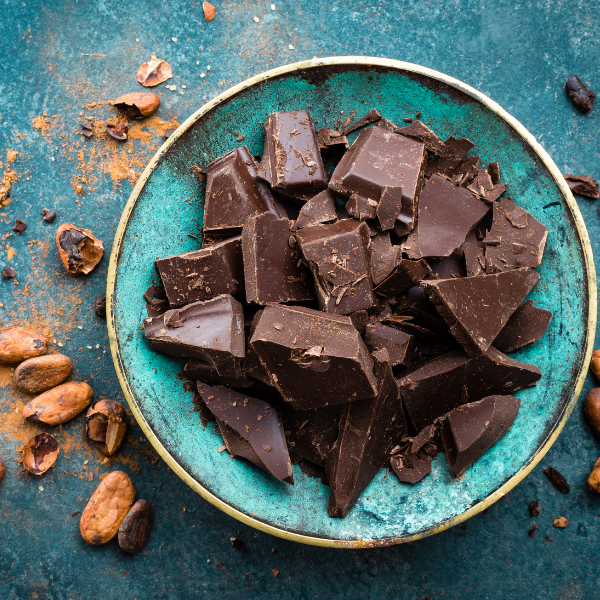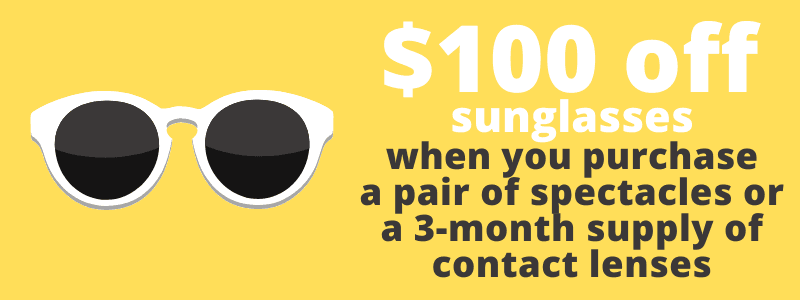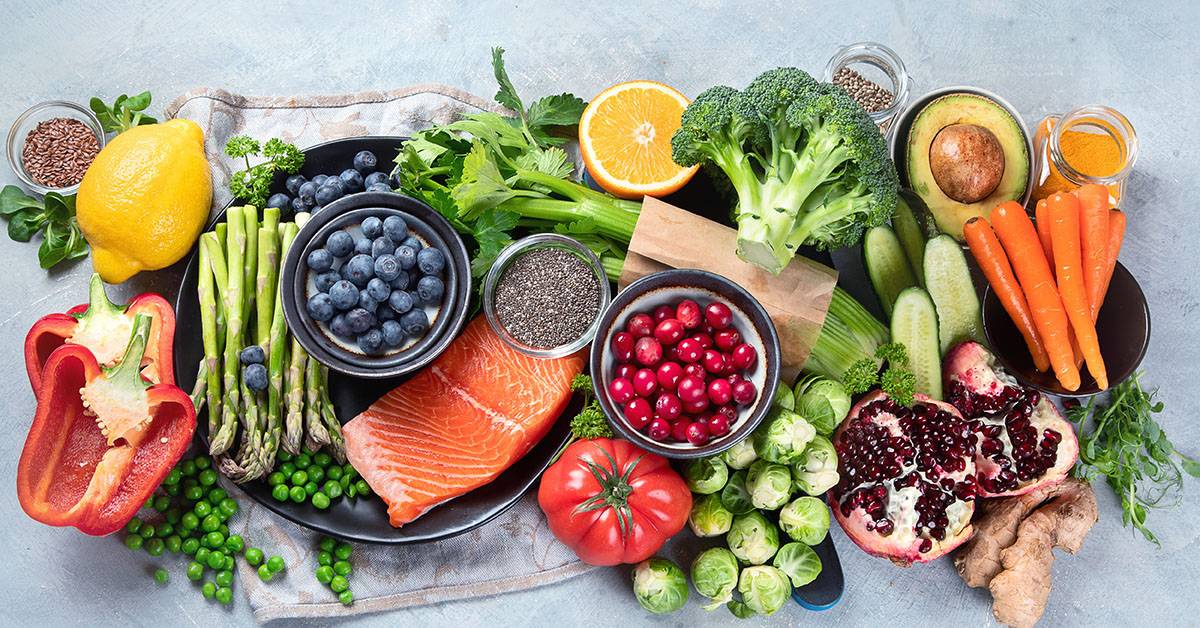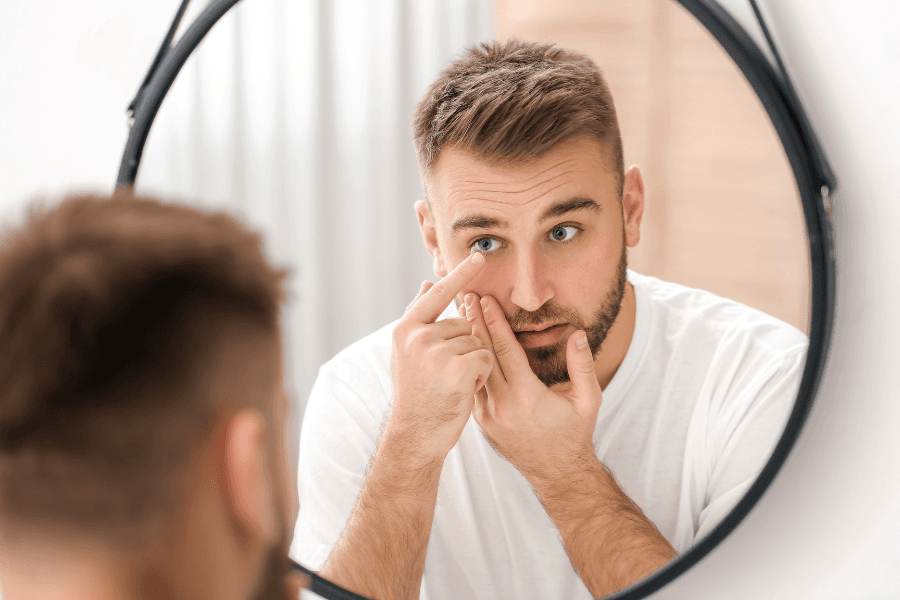How can the cold affect your eyes?
One of the most common patient complaints during the winter months is dry eyes. Cold and windy weather conditions can reduce the natural moisture in your eyes resulting in a burning or itching sensation.
 Dry eye is a common visual condition which affects one in four people worldwide and is more likely to occur in women and the elderly. The medical name for dry eye syndrome is keratoconjunctivitis sicca. Symptoms can include burning, scratchiness or irritation, redness, watering and even blurred vision. Although dry eye is generally not a sight-threatening condition, for those who suffer from it, it is often more than just a minor aggravation. Dry eye can be caused by insufficient tear production from the lacrimal gland or an unstable lipid layer, which is the thin oily layer on the outer most part of the tear film.
Dry eye is a common visual condition which affects one in four people worldwide and is more likely to occur in women and the elderly. The medical name for dry eye syndrome is keratoconjunctivitis sicca. Symptoms can include burning, scratchiness or irritation, redness, watering and even blurred vision. Although dry eye is generally not a sight-threatening condition, for those who suffer from it, it is often more than just a minor aggravation. Dry eye can be caused by insufficient tear production from the lacrimal gland or an unstable lipid layer, which is the thin oily layer on the outer most part of the tear film.
Some tips to get you through the winter months:
- Talk to your optometrist about the best eye drops for your eyes
- Stay hydrated, drink lots of water
- When heating indoors try using a humidifier
- Keep distance from blowing heat sources
- No matter how irritated your eyes are, don’t rub your eyes
For more information on dry eye or any other eye disorder, contact your Optometrist.
Can dark chocolate improve our eyesight?
Chocolate lovers rejoice!
Recent research by the University of the Incarnate Word, Rosenberg School of Optometry, in San Antonio, Texas USA, suggests that eating dark chocolate could improve visual clarity.
 Bars with more than 72% cacao increase ocular blood flow which enhances macular function and sharpens the ability to read words and numbers.
Bars with more than 72% cacao increase ocular blood flow which enhances macular function and sharpens the ability to read words and numbers.
The new research tested people 2 hours after eating 47g of 72% Cacao dark chocolate, and again after 40g milk chocolate in separate sessions more than 3 days apart. The testing looked at various aspects of visual performance.
More than 70% of people scored significantly higher after eating the dark chocolate. The biggest improvement was in contrast sensitivity, which helps us see in low light, or when text is poorly printed. Another area that improved was visual acuity – a measure of the sharpness of vision.
Cacao beans are rich in flavanol, an organic compound which improves blood flow in the brain and cardiovascular system and aids in reducing inflammation.
Researchers proposed increases in blood flow could explain the improvements, but suggested more work needs to be done to understand the exact mechanism. In the meantime we think it sounds like a good excuse to load up on dark chocolate and do some private testing. Sounds like a delicious experiment.
Importance of polarised lenses
It’s summer 2022, the sun is out and there is no doubt that we are all spending more time outdoors after two years in doors. With increased levels of sun exposure, it is critical that we continue to protect our eyes.
Polarised sunglasses are a great option for anyone who spends time outdoors. They are great for high-glare activities such as being on the water. Polarised lenses help reduce glare and provide additional clarity whilst protecting your eyes.
Polarised sunglasses have changed and improved immensely over the years, with newer technology now offering lower distortion to eliminate the swim effect. High-definition polarised lenses also reduce vibration, enhance clarity, allow for faster adaptation and minimise eye fatigue. When considering polarised lenses, it’s important to also consider UV protection.
There is also now a variety of colours in polarised lenses and a large range of fashionable frames on offer. So why not update your look this summer whilst still giving your eyes the best form of eye protection by wearing polarised sunglasses.
Visit our practice and chat to us about polarised lenses and what options might suit your lifestyle.
Until Feb 28, 2022 - get $100 off a pair of sunglasses when you buy specs.*
*Redeemable with the purchase of a complete set of frames and lenses until Monday February 28, 2022. Sunglasses can be prescription or non-prescription. Not to be used in conjunction with any other discounts, packages or offers. Not redeemable on contact lenses. Valid once per patient only.

10 Foods to Assist Your Vision
Eating the right foods can protect your vision and keep you healthy. Adding vitamins, antioxidants and minerals to your diet can improve your overall eye health. Researchers have linked eye-friendly nutrients, such as lutein and zeaxanthin, vitamin C, vitamin E and zinc, to reducing the risk of certain eye diseases like age-related macular degeneration and cataracts.1 You can find these antioxidants in green leafy vegetables, fruits, nuts and a lot of other foods.
Here are the top 10 foods that will boost your eye health.1, 2
Carrots
The hype is true, carrots are good for your eyes. These crunchy root vegetables are a great source of vitamin A, which is important for keeping your cornea clear. Carrots get their bright orange colour from beta carotene, which is essential for vitamin A production in the body. Other foods rich in beta carotene include sweet potatoes, pumpkin, capsicum, mangoes, apricots and rockmelon (and any other bright yellow or orange fruits and veggies you can get your hands on).
Fish
Fish is a very good source of omega-3, which is an important nutrient for eye health. Omega-3 is a polyunsaturated fatty acid which are essential for your body to produce new cells, muscles, nerves and organs, as well as having potent anti-inflammatory properties. They benefit our eye by nourishing the retina and aid tear production to keep the eyes moist and healthy, reducing dry eye syndrome.
Leafy green vegetables
Easy to digest, easy to include into every meal, and readily available, leafy greens are great not just for your eyes, but for your overall health. The darker the green, the better they are for you. Leafy greens such as kale, spinach and green veggies are packed with lutein and zeaxanthin, which are important for keeping your retina healthy. Broccoli, avocados and peas are also good sources of this powerful combination of antioxidants.
Berries and Citrus fruits
Oranges, lemons, red capsicum and berries are high in Vitamin C – a water soluble vitamin and a powerful antioxidant that helps the body form and maintain connective tissue, including collagen found in the cornea of the eye. Vitamin C also promotes healthy bones, skin and blood vessels, including the delicate capillaries in the retina.
Legumes and Pulses
Legumes are plants, pods and seeds that belong to the Fabaceae family. They refer to foods like peas and beans, such as green beans and broad beans. Pulses are dried legumes. They include chickpeas, black-eyed peas, kidney beans, mung beans, and lentils. Not only are legumes and pulses a protein powerhouse and an excellent source of fibre, they are also full of omega-3.
Nuts
Pistachios, almonds, walnuts, whichever take your fancy, are excellent sources of Vitamin E and minerals such as zinc that help keep your eyes healthy and may decrease your risk of age-related macular degeneration.
Seeds
Like nuts and legumes, seeds are high in omega-3s and are a rich source of vitamin E to help fight age-related eye health issues. Seeds such as chia seeds, pepitas, flaxseed, hemp seeds and sunflower seeds will help protect your retina.
Extra-virgin olive oil
The queen of oils, extra virgin olive oil can help your body absorb lutein and zeaxanthin, those all-important carotenoids that are vital for good eye health.
Eggs
Two of the most powerful antioxidants for eye protection, lutein and zeaxanthin, are found generously in egg yolks, just like in leafy green vegetables. When you have them in your omelette, you’re increasing your chances of antioxidant absorption because of the high-fat content of eggs. You also get ample vitamin C and E in the egg yolk, which are believed to be helpful against macular degeneration.
Lean Meat
Protein from lean meats such as beef, poultry (chicken, duck, turkey etc) or pork can be beneficial to your eyesight. Beef is rich in vitamin A and zinc, both of which are beneficial to your cornea and your retina. Poultry and pork are also good sources of zinc.
As well as adding these 10 superfoods to your diet, you should also consider piling your plate with plenty of other fresh fruits and vegetables. Aim to get your two serves of fruit and five serves of vegetables daily. The more colourful your cuisine gets, the better it will be for your eye health. As an added bonus, your overall health will benefit too.
References
1. American Optometric Association , “Diet and Nutrition,” 2020. [Online]. Available: https://www.aoa.org/healthy-eyes/caring-for-your-eyes/diet-and-nutrition?sso=y.
2. L. Arundel, “Top foods that can improve your eye health,” Good Vision For Life, 2016. [Online]. Available: https://goodvisionforlife.com.au/2016/08/04/top-ten-foods-can-improve-eye-health/
Holiday Trading Hours
Holiday Trading Hours
Friday, December 24th: 8.30am - 5.30pm
Saturday, December 25 - Tuesday, December 28: Closed
Wednesday, December 29: 8.30am - 5.30pm
Thursday, December 30: 8.30am - 8.00pm
Friday, December 31: 8.30am - 5.30pm
Saturday, January 1 - Monday, January 3: Closed
Have you used your health fund benefits?

2022 is fast approaching, which means most health fund rebates will expire unless you make a claim.
To get into the end of the year spirit and to help with a fresh new look, we'd like to gift you $50* towards your next pair of spectacles or sunglasses.
This offer is valid from 1 November until 31 January 2022, so even if you've used your optical health fund benefits for this year, you can make a new claim from 1 January and take advantage of these great offers.
Book in your consultation now.
*Redeemable for new purchases from 1 November 2021 towards purchase of complete frames and lenses. To claim your 2021 rebate, orders must be collected by 31 December 2021. Not to be used in conjunction with any other discounts, packages or offers. Not redeemable on contact lenses. One voucher per patient only.
Top 10 Contact Lens Tips
Remember when you first started wearing contact lenses? You may have found it was a little daunting in the beginning. The process of inserting and removing the lenses, getting comfortable touching your eyeball and then there’s all the hygiene protocols to follow. Along the way it’s easy to forget the “must dos” for good eye health and vision. So to help you out we’ve compiled our top ten tips for contact lens wearers – you’re welcome.
- Wash your hands before touching your lens
If you don’t, you risk cross contamination by depositing microorganisms from your hands to the lens thus increasing your risk for infection. You could for example, end up with conjunctivitis or a more serious corneal infection, which can increase the risk of permanent vision loss. When washing your hands, use a disinfected soap and dry them with a paper towel to avoid getting lint in your eyes.
- Check that your lens isn’t inside out and is not torn
Wearing the lens the wrong way generally won’t affect your vision but it may feel uncomfortable. Likewise, a torn lens can cause irritation so best to keep your fingernails short to help avoid accidentally ripping your lenses.
- Have eye drops on hand
Healthy eyes need to stay moisturised and contact lenses may make your eyes feel drier than usual especially if you are in air-conditioning. Your local EyeQ optometrist can recommend which eye drop will be best suited to your individual needs.
- Wash your case after each use
If you’re being totally honest with yourself, how often do you wash your contact lens case? (is that crickets we hear)? Contact lens cases are susceptible to bacterial growth which means if you’re not cleaning your case regularly you are likely creating a breeding ground for germs. Best practice suggests disposing of the old solution, rinsing it out with fresh solution, wiping it with a clean tissue or paper towel and leaving it to air dry face down with the caps off.
- Replace your case regularly
Even if your case looks brand spanking new it’s really important to replace it every three months. A biofilm can form in your case helping bacteria hide from the disinfectant in your contact lens solution which again doesn’t support healthy eyes.
- Store your contact lens case in a clean, low humidity environment
While it makes practical sense to keep your contact lenses in the bathroom it’s probably not the best idea (how super impractical)!
You may be surprised that cultures of contact lens cases have found faecal matter in them, which occurs when the case is kept in the bathroom without the lens caps on, flushing the toilet creates a mist of spray that settles inside the case, yuck!
- Only wear your contact lenses for the recommended time
Follow your optometrist’s instructions regarding the length of time to wear and use your lenses. For example, if the lenses are designed to be replaced every month don’t wear them for two. Your risk of serious eye infections increases if you overwear your contacts.
- Don’t sleep in your contact lenses
Unless your optometrist has advised you to do so it’s important that you don’t ever sleep in your contact lenses. Doing so drastically increases your risk of eye infection. The contact lens limits your eyes from getting oxygen and hydration which it needs to fight off any microbial invasion.
- Insert your contact lenses before applying make-up
Once you’ve washed your hands you should insert your contacts before applying moisturiser or make-up. It’s easy for any residue left on your fingers to make its way into your eyes or onto your contact lenses.
- Consider daily disposable lenses
There are two major benefits to wearing daily disposable contact lenses. Firstly, they are super convenient as no lens cleaning or maintenance is required. You literally wear your lenses for the day and throw them out once removed. Bye-bye contact lens cases!
The other and more significant benefit is that daily contact lenses are healthier for your eyes as there’s a decreased risk of corneal infection.
Make an appointment to speak to our optometrist regarding your contact lens wear and cleaning practices if you have any questions or concerns.
Top 10 Contact Lens Tips
Remember when you first started wearing contact lenses? You may have found it was a little daunting in the beginning. The process of inserting and removing the lenses, getting comfortable touching your eyeball and then there’s all the hygiene protocols to follow. Along the way it’s easy to forget the “must dos” for good eye health and vision. So to help you out we’ve compiled our top ten tips for contact lens wearers – you’re welcome.
- Wash your hands before touching your lens
If you don’t, you risk cross contamination by depositing microorganisms from your hands to the lens thus increasing your risk for infection. You could for example, end up with conjunctivitis or a more serious corneal infection, which can increase the risk of permanent vision loss. When washing your hands, use a disinfected soap and dry them with a paper towel to avoid getting lint in your eyes.
- Check that your lens isn’t inside out and is not torn
Wearing the lens the wrong way generally won’t affect your vision but it may feel uncomfortable. Likewise, a torn lens can cause irritation so best to keep your fingernails short to help avoid accidentally ripping your lenses.
- Have eye drops on hand
Healthy eyes need to stay moisturised and contact lenses may make your eyes feel drier than usual especially if you are in air-conditioning. Your local EyeQ optometrist can recommend which eye drop will be best suited to your individual needs.
- Wash your case after each use
If you’re being totally honest with yourself, how often do you wash your contact lens case? (is that crickets we hear)? Contact lens cases are susceptible to bacterial growth which means if you’re not cleaning your case regularly you are likely creating a breeding ground for germs. Best practice suggests disposing of the old solution, rinsing it out with fresh solution, wiping it with a clean tissue or paper towel and leaving it to air dry face down with the caps off.
- Replace your case regularly
Even if your case looks brand spanking new it’s really important to replace it every three months. A biofilm can form in your case helping bacteria hide from the disinfectant in your contact lens solution which again doesn’t support healthy eyes.
- Store your contact lens case in a clean, low humidity environment
While it makes practical sense to keep your contact lenses in the bathroom it’s probably not the best idea (how super impractical)!
You may be surprised that cultures of contact lens cases have found faecal matter in them, which occurs when the case is kept in the bathroom without the lens caps on, flushing the toilet creates a mist of spray that settles inside the case, yuck!
- Only wear your contact lenses for the recommended time
Follow your optometrist’s instructions regarding the length of time to wear and use your lenses. For example, if the lenses are designed to be replaced every month don’t wear them for two. Your risk of serious eye infections increases if you overwear your contacts.
- Don’t sleep in your contact lenses
Unless your optometrist has advised you to do so it’s important that you don’t ever sleep in your contact lenses. Doing so drastically increases your risk of eye infection. The contact lens limits your eyes from getting oxygen and hydration which it needs to fight off any microbial invasion.
- Insert your contact lenses before applying make-up
Once you’ve washed your hands you should insert your contacts before applying moisturiser or make-up. It’s easy for any residue left on your fingers to make its way into your eyes or onto your contact lenses.
- Consider daily disposable lenses
There are two major benefits to wearing daily disposable contact lenses. Firstly, they are super convenient as no lens cleaning or maintenance is required. You literally wear your lenses for the day and throw them out once removed. Bye-bye contact lens cases!
The other and more significant benefit is that daily contact lenses are healthier for your eyes as there’s a decreased risk of corneal infection.
Make an appointment to speak to our optometrist regarding your contact lens wear and cleaning practices if you have any questions or concerns.
What is blue light and do we need to protect our eyes from it?
Last year saw an influx of new buzzwords. COVID-19 ruled, of course, but it was in good company with ‘pivot’, ‘new normal’, ‘zoom’ and ‘social distance’. Equally buzz-worthy and a concept that may have hit your radar at a similar time are blue light filtering glasses. Since these are the only buzzworthy concepts from the aforementioned list that we can speak of with authority, let’s take a look into what exactly blue light is and why it’s causing such a stir.
What is blue light?
Blue light is part of the visible light spectrum – it’s the light we can physically see whereas ultraviolet (UV) and infrared light are outside the visible light spectrum. Light is made up of electromagnetic particles that travel in waves. These waves range in length and strength and emit energy. The length of these waves is measured in nanometres (nm) with 1 nanometre equalling 1 billionth of a metre.
Blue light comes from both natural and artificial sources. Sunlight is a natural source, while the blue light emitted from digital screens, electronic devices and LED lights is artificial. Blue light has a very short wavelength and as a result produces more energy. Studies suggest that long term exposure to blue light may damage your eyes.
How does blue light affect us?
Sunlight is the main source of blue light and is everywhere. Our bodies use blue light to regulate our natural sleep cycles, otherwise known as our circadian rhythm. Our mood, level of alertness and overall wellbeing can be aided by natural blue light.
Blue light waves are the shortest, highest energy wavelengths of the visible light spectrum, in turn meaning they can potentially damage the internal structures of the eyes such as the retina and macula. Children are particularly susceptible to these damaging effects since the young eye is less able to filter blue light.
Blue light and ARMD
Clinical studies suggest that exposure to High Energy Visible (HEV) blue light can be a risk factor for macular degeneration.
Age and lifestyle factors such as poor diet and smoking are even greater risk factors for the development of age-related macular degeneration (ARMD).
Digital eye strain
Blue light is believed to be responsible for digital eye strain. Flickering blue light from digital screens creates glare and impacts visual clarity, contrast and sharpness. Blue light has also been implicated in migraines.
Today, we have a plethora of electronic gadgets to keep us connected with friends, family and colleagues, not to mention entertain ourselves (Netflix anyone?). Unfortunately, one of the by-products of this use of technology, is the amount of time we are spending staring at digital screens, often excessive.
Sadly, it’s not just adults that are affected. Children are increasingly using digital devices to play, read and even do schoolwork. This combination of more screen time and less “green time” (time spent outdoors in nature and natural light) can harm children’s vision and puts them at risk of developing myopia or near-sightedness.
There are certain factors when it comes to reducing the risks for children developing myopia that are within parents’ control, the main one being keeping screen time to a minimum. The World Health Organization (WHO) released daily screen guidelines for young children in April 2019. They recommend infants (less than 1 year old) should not have any screen time while those aged 2-5 should have no more than 1 hour of screen time per day. The American Academy of Paediatrics goes on to suggest that children over the age of 5 and into teenage years, don’t need a specific time limit put in place so long as digital consumption doesn’t interfere with physical activity and sleep.
To help parents/ carers, we’ve put together our top 5 suggestions to help minimise screen time and reduce digital eye strain.
5 tips for parents dealing with increased screen time
- Choose wisely – make a point to check up on what your kids are watching or playing. Children don’t always know what’s appropriate for their age and it’s easy for them to lose track of time. There’s a host of apps available to help you monitor your child’s viewing habits so consider these if necessary.
- No screen time before bed and keep devices out of the bedrooms at night.
- Make time for media with your kids but don’t forget reading. Reading to your child promotes bonding and prepares them for learning.
- Practice what you preach. Kids are very good at observing those around them so be mindful of how much time you personally spend on devices. Make a point to schedule downtime and allocate time for chores, outdoor time, reading and homework.
- Consider blue light filtering lenses such as TechShield Blue (even if you’re not a prescription glasses wearer) as they assist in reducing the amount of blue light penetrating the eye.
How to protect your eyes against the sun
By embracing some simple actions and making them a way of life, you and your family can safely enjoy the great outdoors while protecting the health of your eyes and the sensitive skin around them.
- Wear sunglasses year-round whenever you are out in the sun. Sun damage to the eyes can occur any time of year.
- Wear sunglasses marked category 2, 3 or 4, which provide good UV protection.
- Category 0 or 1 novelty or toy sunglasses with coloured lenses don't provide enough protection and should be avoided.
- Polarised lenses are great for cutting out reflected glare and are useful for the beach, fishing and driving.
- Sunglasses are also available for those who need prescription lenses and come in tinted, polarized or photochromatic (darken with the sun) options.
- Wear a broad brimmed hat with tightly woven fabric (no holes) to protect your face and the top of your head. Hats can block as much as half of all UV rays from your eyes and eyelids.
- Use a broad spectrum, water resistant SPF30 (or higher) sunscreen. Put it on 20 minutes before you go outdoors and every two hours thereafter. Sunscreen should never be used to extend the time you spend in the sun.
- Be aware of clouds: the sun’s rays can pass through haze and clouds, so eye protection is important even when there is cloud cover.
- Take extra care near water, snow and sand: 80% or more of the sun’s rays reflect off these surfaces, causing them to hit your eyes and skin a second time.
We’re making it easier for you to keep your eyes protecting with our latest offer. Get $100 off sunglasses when you purchase a pair of spectacles or a 3-month supply of contact lenses.*

*Offer ends October 31st. Not available in conjunction with any other offer. Offer can be used for both prescription and non-prescription sunglasses.







